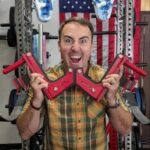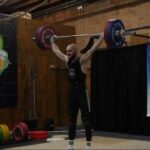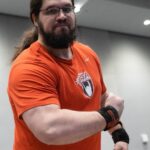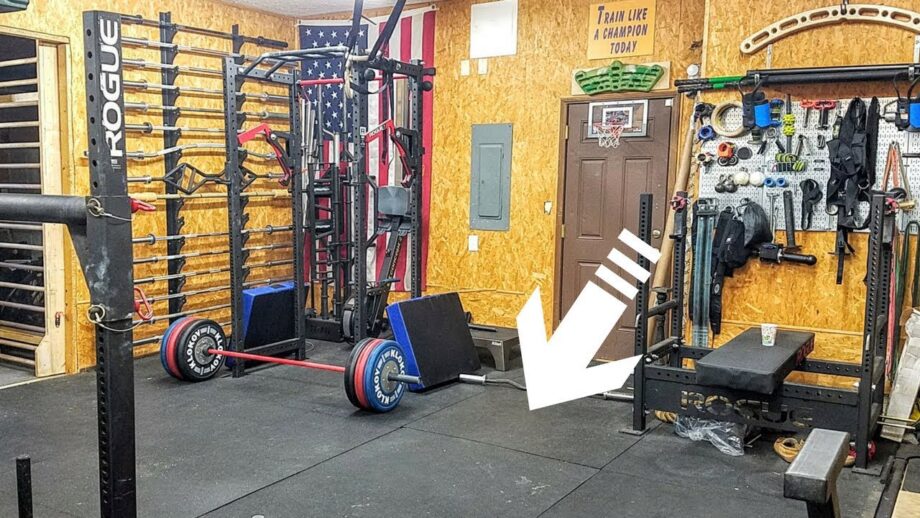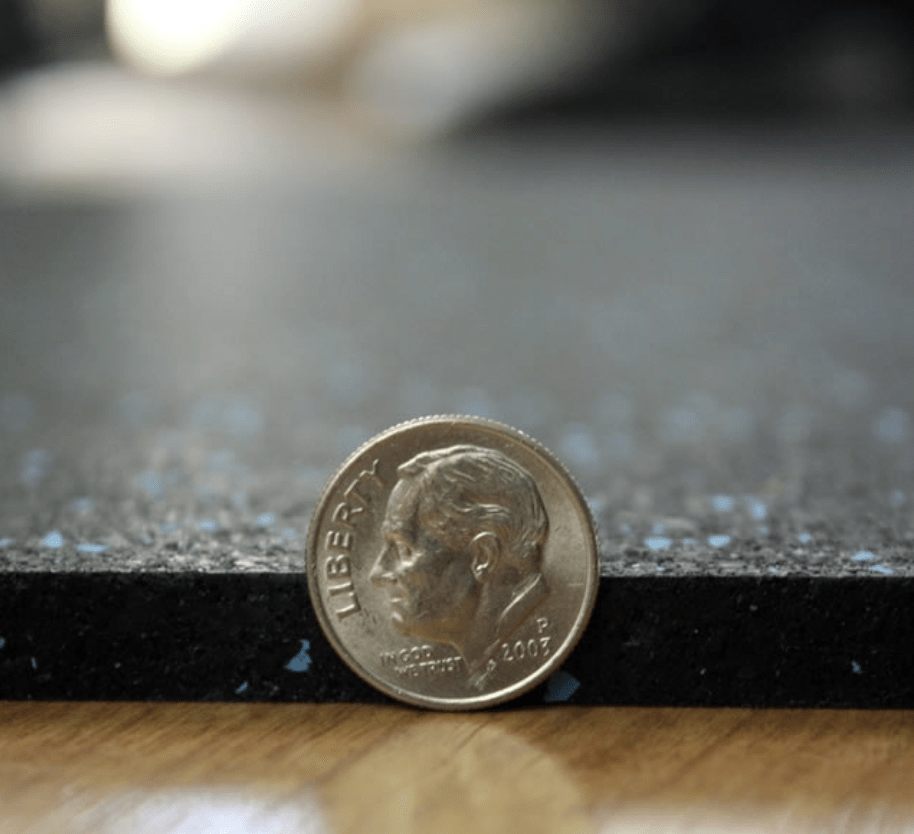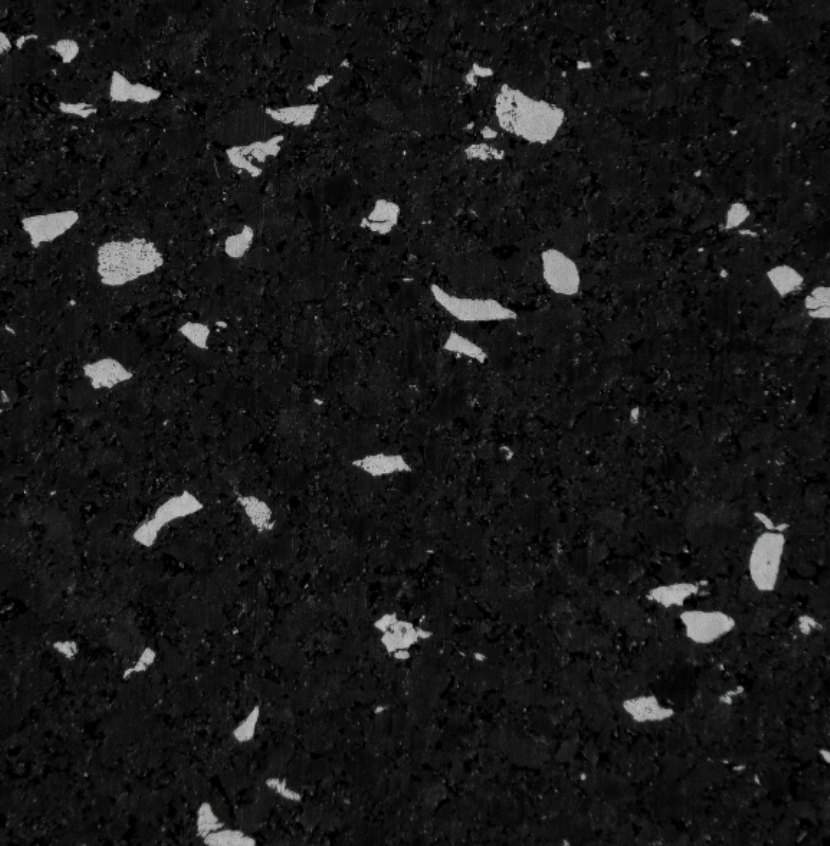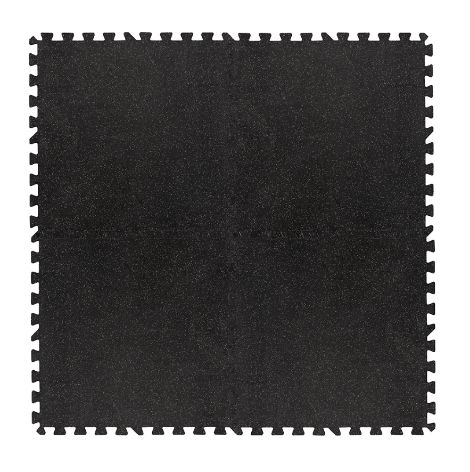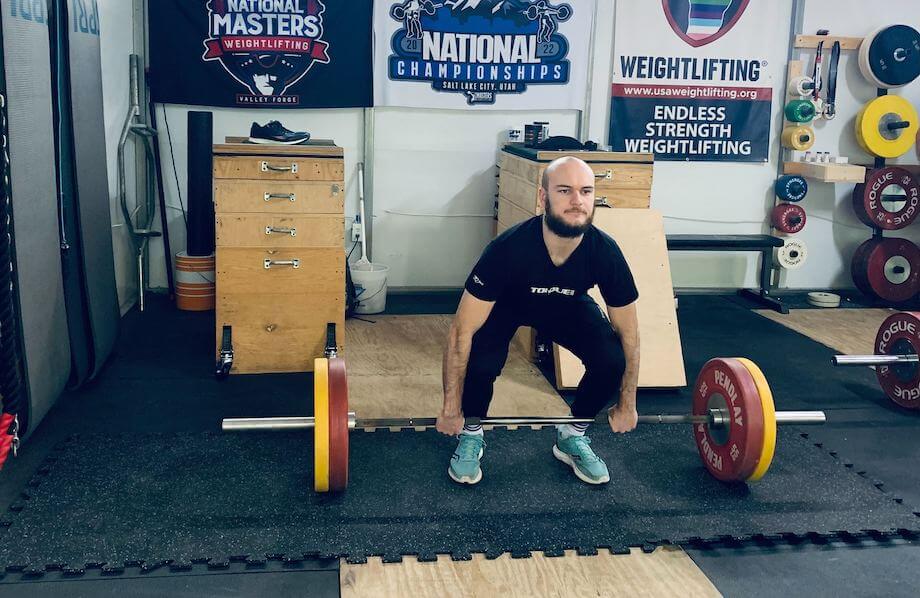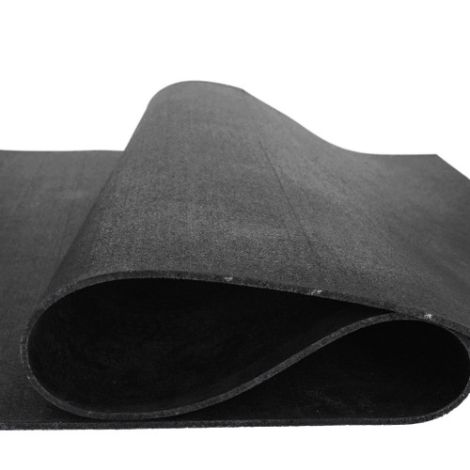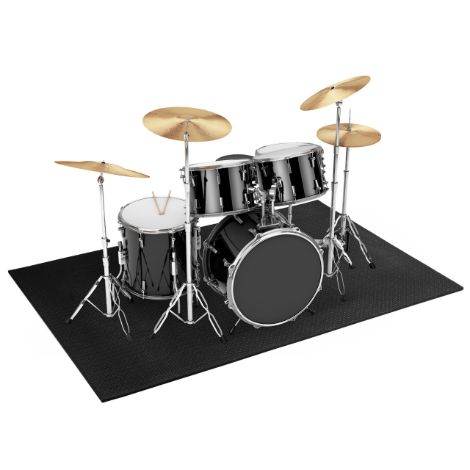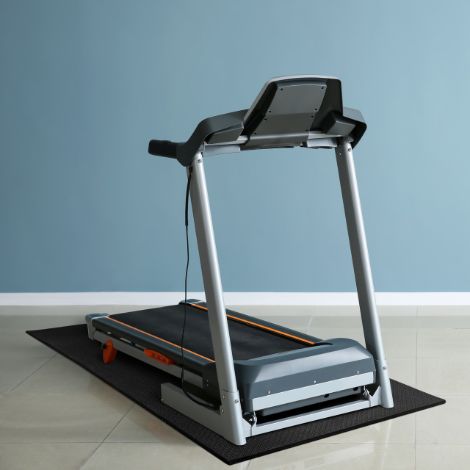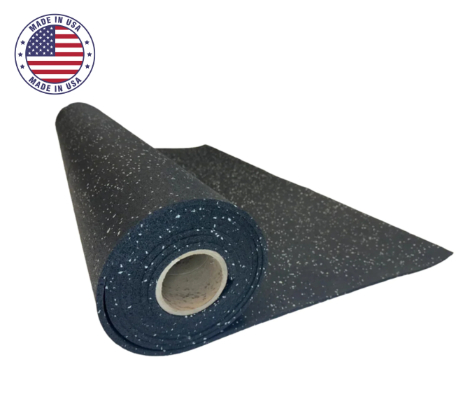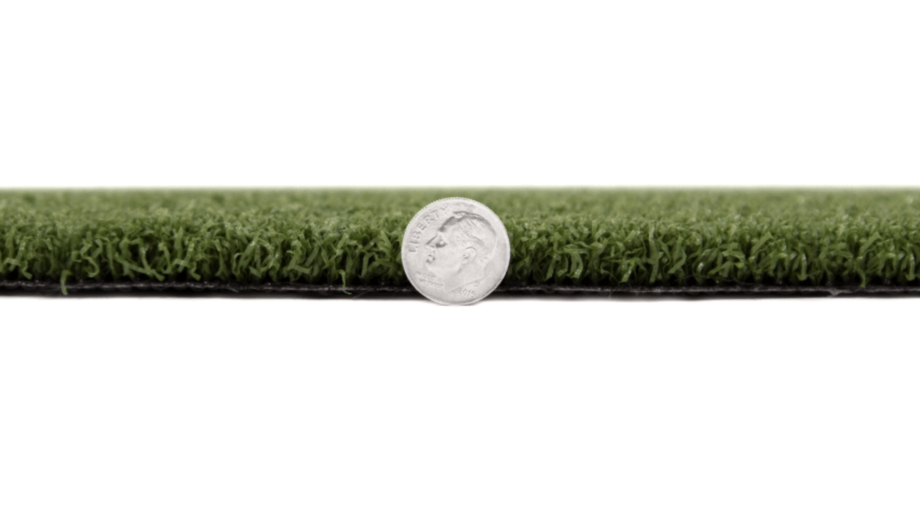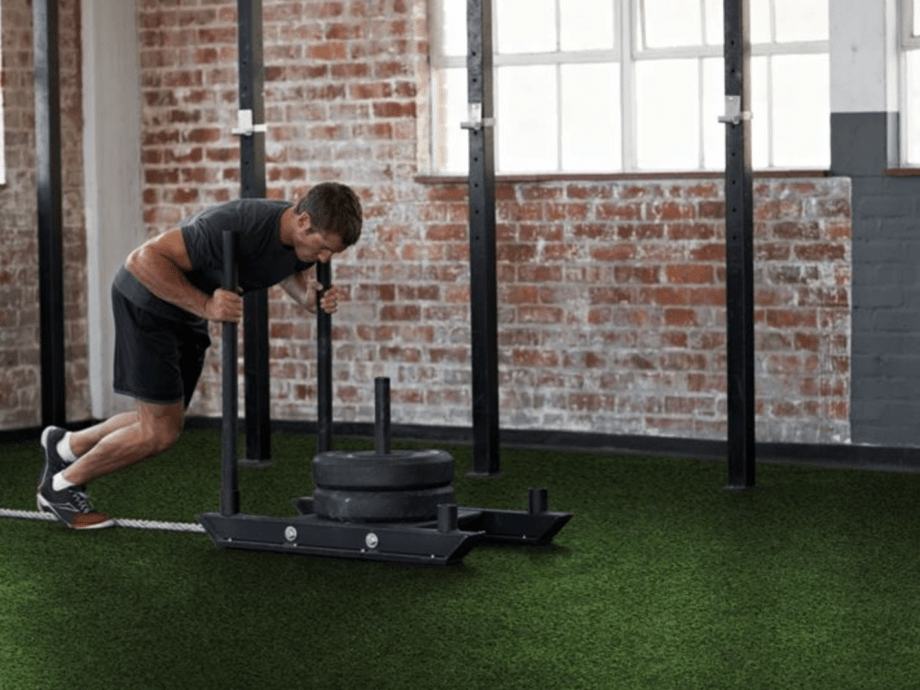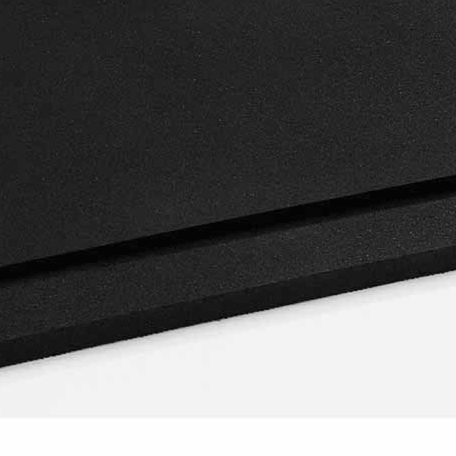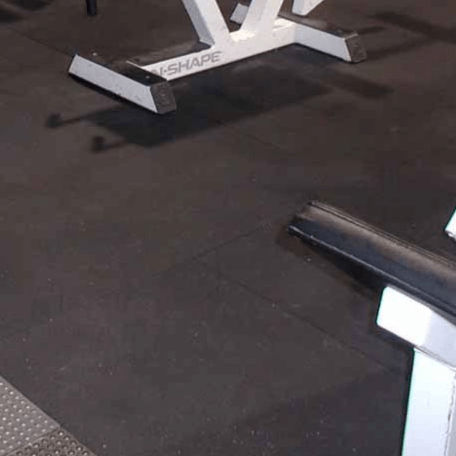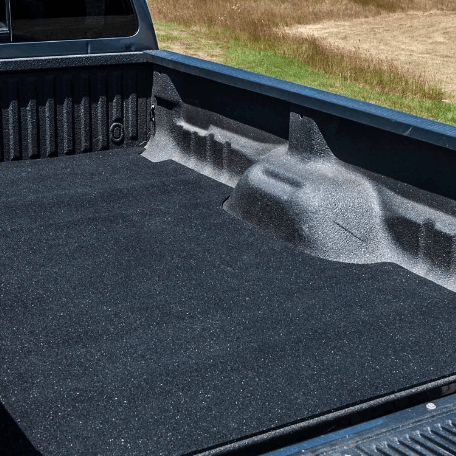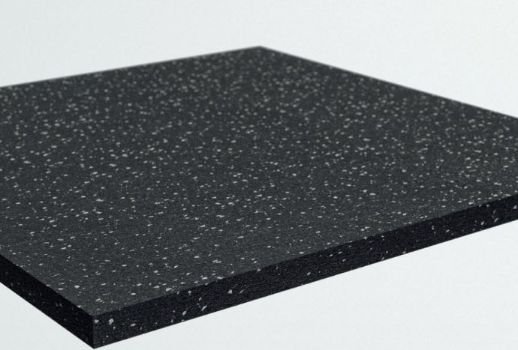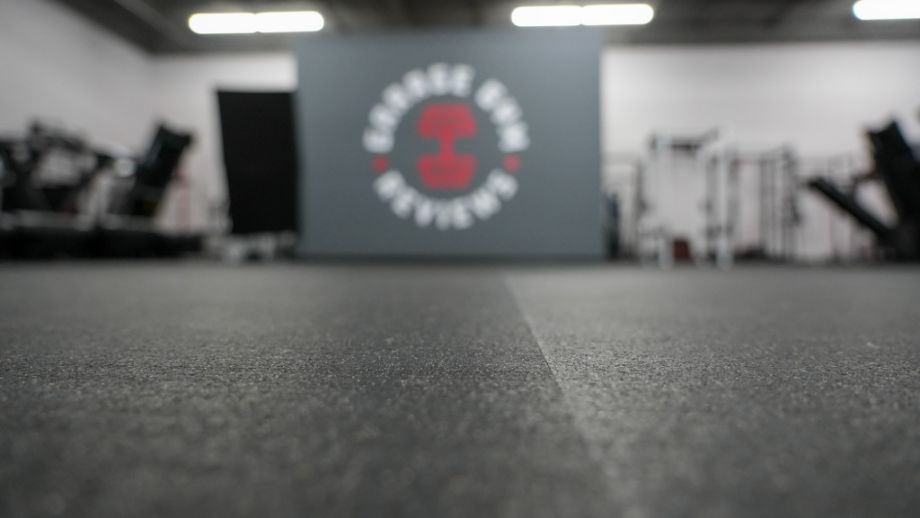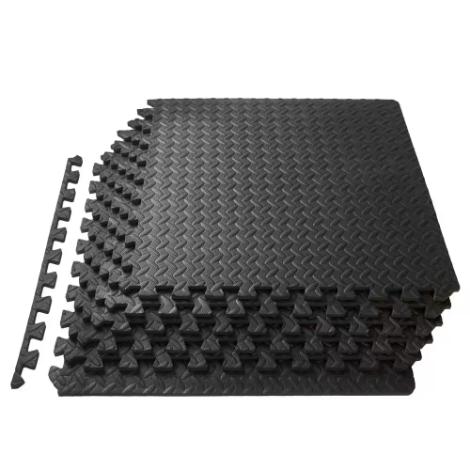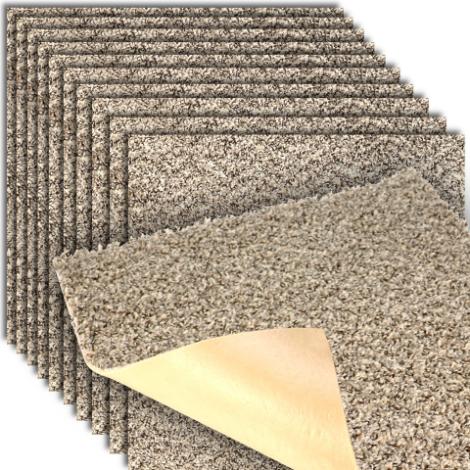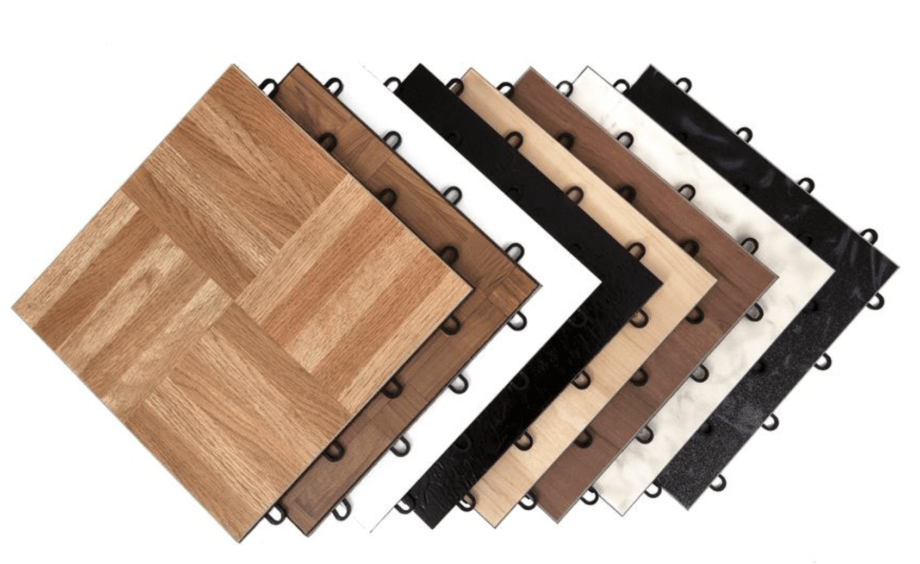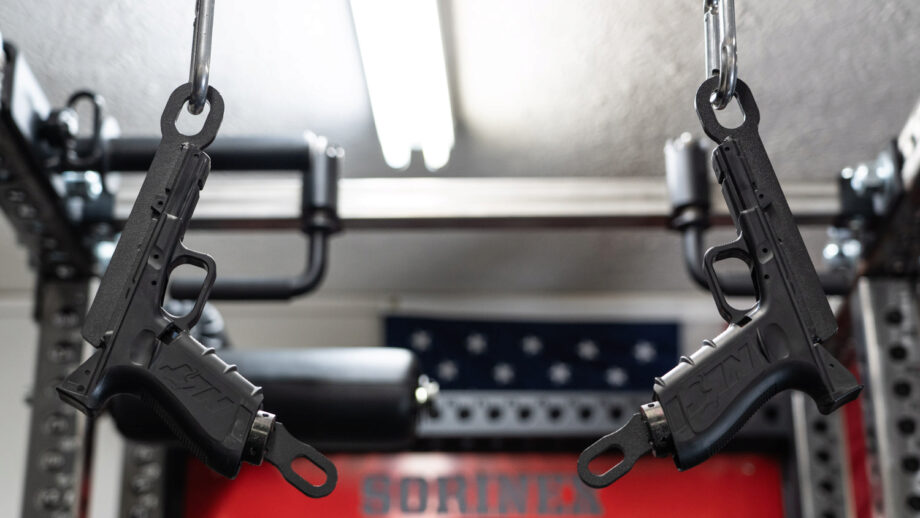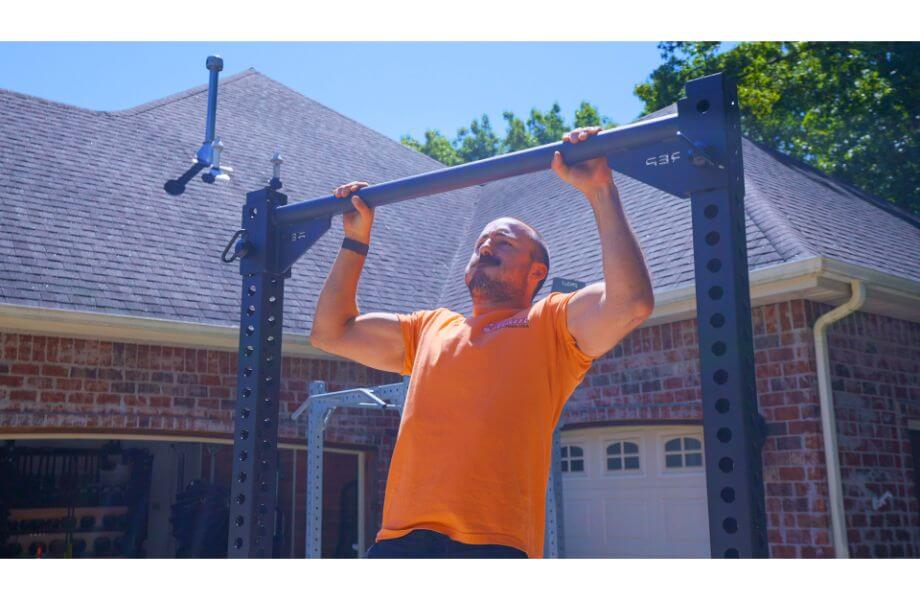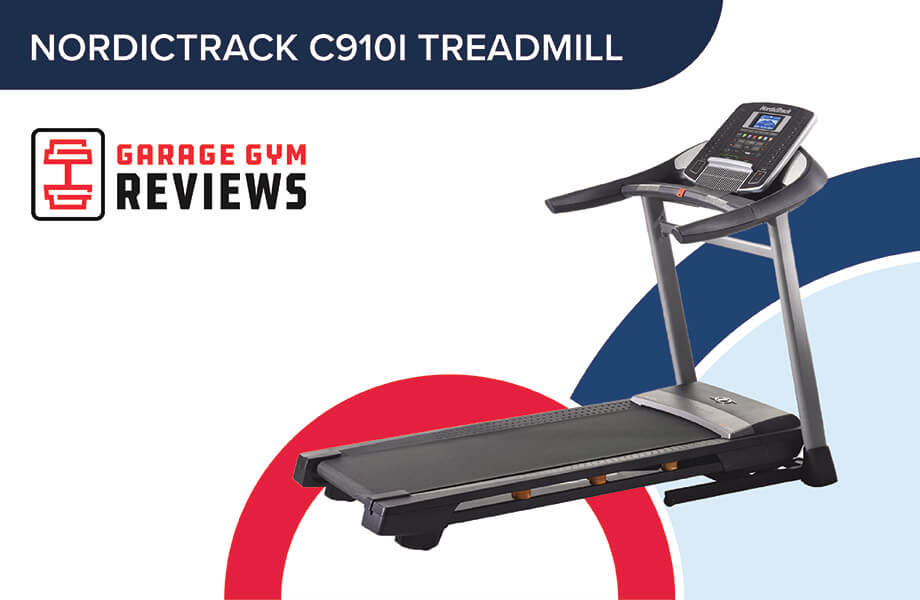The foundation of every home gym is quite literally what’s on the floor. Our team bought and tested some of the best home gym flooring options (as well as some obscure mats) to determine what works best for most people. We used an in-depth fitness equipment testing methodology to assess factors such as:
- Durability: Can it withstand heavy, sweaty workouts?
- Performance: Does it protect your floors and your equipment?
- Smell: Does it give off a bad smell when first installed, and does it eventually fade away?
- Value: Is the price fair?
We have competitive weightlifters, CrossFitters, and many home gym owners on our team. We know that no two home gyms are alike. Some people lift weights in the garage, some do yoga in the living room, and some turn an upstairs bedroom into a high-intensity cardio studio.
We found the best soundproof exercise mats, tiles, and even vinyl planks so you can determine what works best for your workout space. You might be utilizing a yoga mat or whatever flooring you have in your home right now, depending on your setup. However, if you truly want to improve your at-home gym area, investing in a new gym floor can significantly improve your training results.
The 10 Best Home Gym Flooring Options
- Best Home Gym Flooring Overall: Flooring Inc 8mm Rubber Rolls
- Best Rubber Interlocking Tile Flooring: Living.Fit Gym Mats
- Best Soundproofing Home Gym Flooring: Second Skin Stomp Mat
- Best Rubber Flooring: Living.Fit Rubber Flooring Rolls
- Best Artificial Turf for Gyms: Flooring Inc Performance Turf Rolls
- Best Budget Stall Mats: Tractor Supply ¾” Rubber Stall Mats
- Best Heavy-Duty Home Gym Flooring: PLAE Forge
- Best Cheap Home Gym Flooring: ProsourceFit Puzzle Exercise Mats
- Best Carpet Tile for Home Gyms: Eclipse Peel and Stick Carpet Tiles
- Best Vinyl Gym Flooring: Flooring Inc Modular Grid-Loc Tiles
Best Home Gym Flooring Video Review

Best Home Gym Flooring Overall: Flooring Inc 8MM Strong Rubber Rolls
Good for: People willing to spend a little more money on the best garage gym flooring
If you want flooring that is consistent, comes with more options, and often less smell than stall mats for your home gym, then Flooring Inc Rubber Rolls around 8mm or thicker is a great choice.
What our tester says:
“After using them for almost a year in my personal garage gym, I’ve become a fan. They hold up against all my gym and cardio equipment and have enough cushioning to protect my floor.”
Best Rubber Interlocking Tile Flooring: Living.Fit Gym Mats
Good for: Home gym users who want interlocking mats to prevent shifting while lifting
With interlocking pieces and free shipping, Living Fit Gym Mats are an excellent choice for gym flooring. Made of a heavy-duty black rubber, the mat is spike resistant and durable enough to last, backed by a five-year warranty.
Best Soundproof Home Gym Flooring: Second Skin Stomp Mat
Good for: Those who want to reduce noise in their home gym or for their downstairs neighbors
The Second Skin Stomp Mat is a great choice for gym flooring, especially for those who need the ability to soundproof their gym. Coming in two different thickness options, these mats can provide noise reduction for home gyms, as well as for drum sets and laundry machines. Although a bit pricey, its noise reduction might well be worth the price.
Best Rubber Flooring: Living.Fit Rubber Flooring Rolls
Good for: Gym owners with large floor spaces to cover
Made of certified clean rubber, Living.Fit Rubber Flooring Rolls are an excellent choice for gym flooring. They’re sold in 4′ x 24′ rolls, are designed for easy cleaning, and don’t have a strong rubber smell.
Best Artificial Turf for Gyms: Flooring Inc Performance Turf Rolls
Good for: Athletes looking to minimize pressure on the joints
The Performance Turf Rolls are a great choice because of their versatility. They work well inside and outside, and if you choose the non-cushioned back option, there are holes for drainage.
Best Budget Stall Mats: Tractor Supply Rubber Stall Mats
Good for: Any home gym in a basement, garage or even outdoors
These horse stall mats from Tractor Supply use recycled rubber, are 3/4″ thick, 4 ‘x 6’ in size, and weigh upwards of 100 pounds. You can find horse stall mats at other farm supply stores, and they will be similar in dimensions. The thickness makes this flooring sound-absorbent.
Best Heavy-Duty Home Gym Flooring: PLAE Forge
A high-performance gym flooring option that provides grip, noise and shock absorption, and protection for your floors.
Best Cheap Home Gym Flooring: ProsourceFit Puzzle Exercise Mats
Good for: Home gym owners on a budget who need to protect their floors under heavy equipment
ProsourceFit Puzzle Exercise Mats are an inexpensive flooring option for home gyms. These are best for low-impact exercises, since heavier weights will cause them to break down easily, especially if the weight is dropped onto the mats.
Best Carpet Tile for Home Gyms: Eclipse Peel and Stick Carpet Tiles
Good for: Very low-impact workout spaces featuring high cardio and lightweights
Eclipse Peel and Stick carpet tiles are a budget-friendly and easy-to-install home gym flooring option that feels like carpet. It’s not ideal for lifting heavy weights, but should work for bodyweight exercises or storing your treadmill or other cardio equipment.
Best Vinyl Gym Flooring: Flooring Inc Modular Grid-Loc Tiles
Good for: People who want their home gym to be aesthetically pleasing
This is a good option if you want nice-looking flooring in your home gym and you don’t drop weights or do high-impact activities.
Other Home Gym Flooring We Researched
Here are some other flooring options that we took a look at or have used, but didn’t quite crack our best of list:
- Flooring Inc 1/4″ Tough Rubber Flooring Rolls: These rolls are good for easy cleaning, though customer reviews state the initial rubber smell is strong (but goes away with time).
- Stamina Gym Flooring: In our Stamina Gym Flooring review, we gave high marks to this eco-friendly rubber flooring.

What to Look for in a Home Gym Floor
Before investing in some high-quality gym flooring, take into account a few considerations:
Material
There are a few basic types of material to choose from:
- Rubber: For the type of workouts I do, rubber gym flooring is really the only viable option. It’s the most durable material, easy to clean, easy to install, and protects your floors. I’ve used it with barbells, free weights, conditioning equipment, and more.
- Plastic: In my experience, plastic usually ends up cracking under big weights. (See Swisstrax: I dropped kettlebells from 5 feet on it.) However, plastic can look nice and be easy to clean, it just depends on the floor exercises you’re doing. I don’t recommend this for weight training.
- Foam: There are some great uses for foam, like sitting under heavy exercise equipment. It’s essentially like a yoga mat: Foam can provide some comfort, but it ends up being unstable for squatting, and it is not water-resistant.
- Turf: I love turf for certain workouts and exercises, especially for athletes who do a lot of high-impact activity. However, it is cost-prohibitive and not the best material for weightlifting and barbell exercises.
- Vinyl: I would reserve a vinyl floor for someone who is really into aesthetics because it has the look of hardwood floors. However, this is not ideal for using free weights and doing weightlifting. This is more of a pilates or yoga studio feel, and you would have to certainly have a yoga mat to be comfortable doing floor exercises on it. Vinyl can be moisture resistant and resistant to mold and mildew as well, which is a bonus.
Durability
Are you going to be dropping weights like adjustable dumbbells or kettlebells? Are you worried about the flooring underneath the gym floor? If you said yes to either of these, then finding a durable material, like rubber flooring, is a must. Rubber and turf are among the most shock absorbent, whereas vinyl and carpet won’t do much.
Type of Exercise
For intensive activities like jumping rope or weight training, use rubber or foam flooring—it will absorb impact better than carpet, vinyl, or grass. These materials are more suitable for yoga or serve as a foundation for exercise bikes or treadmills.
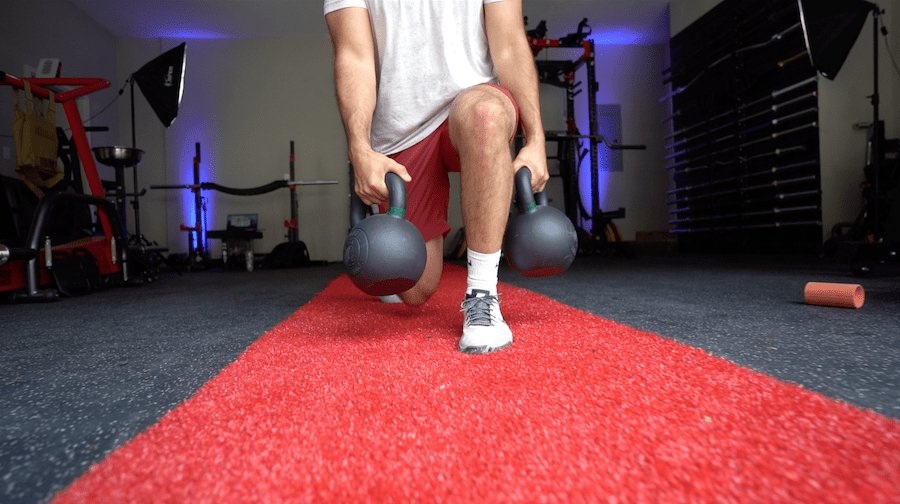
Noise Dampening
If you’ve ever dropped a barbell from overhead, you know the kind of noise it makes. Putting in a thick rubber floor can dampen that sound. Some people even pad deadlift areas with extra mats to absorb the sound.
Cost
Foam is easily the cheapest home gym flooring you can find, and turf tends to be on the more expensive end. Within the world of rubber flooring, there is variance in price. And be aware that companies and e-sellers like Amazon all list the price differently: per foot, per roll, per 4×6 piece, etc. Figure out what each cost per square foot for a good comparison.
Your Space Dimensions
If you have a perfectly square or rectangle space, then your options are wide open. However, most garage gyms have uneven walls, water heaters, and other items to work around. If that’s your space, find a material that you can easily cut and move around, like rubber flooring.
The size of your space will also factor into your cost, since you’ll obviously have more flooring to cover. Depending on your budget, you may need to consider a more budget-friendly option for a larger garage gym, but you may be able to afford a more premium flooring for a more compact space.
RELATED: Best Compact Exercise Equipment
Benefits of Home Gym Flooring
Some types of flooring are better than others for athletic performance, as seen in a 2017 study2 that compared different sports floors with shoe cushioning, finding that different floors had different responsiveness depending on the cushioning of the shoe. An older study3 notes that basketball players’ vertical jumps improved on composite flooring when compared to normal wood floors.
Although there are some obvious reasons to having home gym flooring, there are a couple benefits that you may not have thought of.
Floor and Equipment Protection
The biggest benefit of home gym flooring is that it protects the foundation of the garage, room, or wherever else you may be working out. It should go without saying that a loaded barbell is a heavy object and when dropped (whether intentional or not) can cause significant damage to concrete, wood, and other surfaces.
On the other hand, this also can help protect your weights and equipment, too, by dampening the weights’ impact with the ground and reducing the likelihood of your weights bouncing up at odd angles. Weights bouncing wildly can potentially hurt you or damage any home gym machines or racks nearby you.
Noise Reduction
Speaking from experience, dropping weight on concrete can be loud. The proper home gym flooring can also reduce the noise a barbell makes when it hits the ground. Flexible flooring like rubber rolls can absorb the impact to reduce the noise created. Certain mats will even have waffle patterns built underneath the mat to help further absorb and disperse noise, making it even quieter.
Of course, no flooring or mat will completely silence your weights on impact, but there are several that can help reduce the noise.
Versatility and Functionality
Certain gym floorings can open up the possibilities of what your garage gym can be used for. Rubber flooring is some of the most versatile flooring, since it’s durable enough for heavy lifting, but also grippy enough for some plyometrics and bodyweight exercises.
Other flooring options may limit what you can do, but will help you perform your intended type of training. Turf, for example, shouldn’t be used for heavy cleans, but the material is great for plyometrics and running drills. You can even use it for pushing a weight sled around—if you don’t want to drag it around your neighborhood.
How We Picked and Tested The Flooring
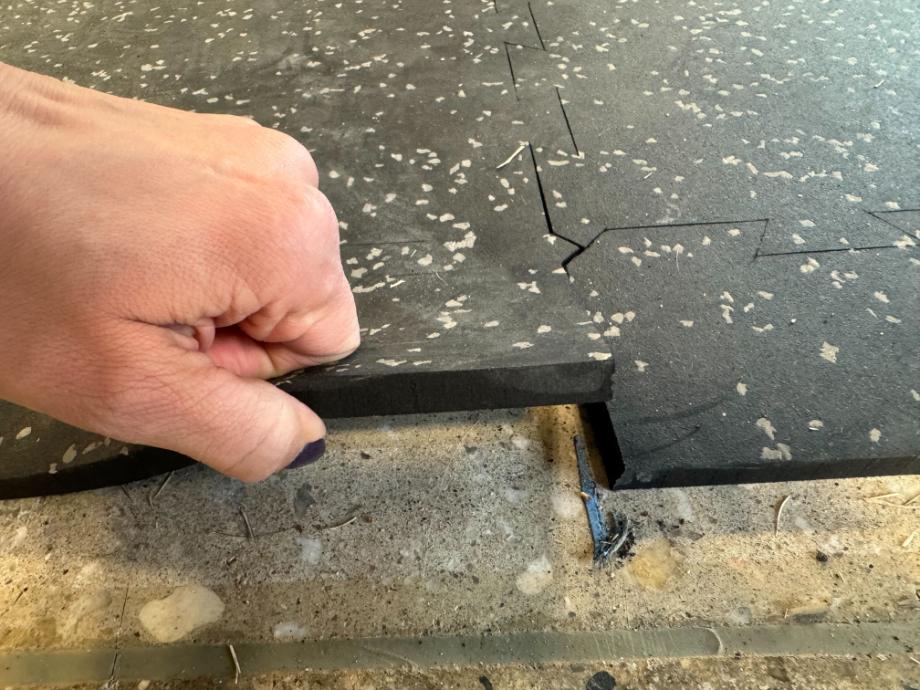
Home gym flooring is relatively simple, at least when compared to finding the best Olympic barbell or best trap bar. There are really only a few different materials used as flooring for a home gym: rubber floor, vinyl flooring, foam mats, carpet tiles, and artificial turf.
To begin my search for the best flooring for a home gym, I ran out to the garage gym to see all of the samples I had on hand. What I’ve done in the past in building different home gyms was order samples from most manufacturers to feel and see the difference between all of the options they make.
What becomes clear rather quickly is the fact that most rubber flooring varies primarily on aesthetics and thickness, unless you go with a really high-end option like Plae Flooring that uses multiple laminated layers to suppress sound and vibration.
After training on all the different types of mats, I weighed the thickness versus the price of rubber matting. Thicker is almost always better. It will suppress sound, protect your foundation, and protect your equipment better than thinner matting. However, it requires more material, often uses special molds, and is, therefore, more expensive.
Here are the specifications we judged the matting on to decide how to rank the various options:
Material Used
There is a wide range of materials used for home gym flooring, but, by and large, the best is rubber. Not all rubber is the same. Some are recycled while others use virgin rubber. In most cases, avoid foam and plastic, go with rubber.
Thickness
The thicker the flooring, the better (to a degree.) Thicker flooring will suppress sound, protect your foundation and protect your equipment.
Sound Suppression Abilities
Suppressing sound in a home gym is an often-requested feature of flooring. However, most flooring that is designed specifically for sound suppression is very expensive. They use unique molds and a lot of material.
Grip
Potentially slipping during a deadlift is something that simply should not ever happen. You should feel secure on the floor during all movements with both shoes on and off.
Compression Under Foot
The ideal gym flooring should not compress underfoot. Compression leads to instability and is the same reason it’s not recommended to wear thick-soled running shoes while squatting.
Compression Under Load
Although flooring shouldn’t compress greatly while underfoot, it should compress under a heavy load. Compressing under a barbell and plates will protect your equipment.
Value
The features and quality should be reflected by the price. What we’re looking for is the best value, not just the best without considering the cost.
How to Clean Home Gym Matting

The best method to clean horse stall mats is with a Simple Green cleaner and a deck brush. Both can be found at your local grocery or hardware store for less than $10. If the smell lingers, you can try baking soda or essential oils (tried and tested).
RELATED: How To Clean Rubber Gym Flooring
In addition to that, I suggest getting a leaf blower and blowing the mats off periodically. If you’re not in a garage gym, a vacuum can work well too, although it will take longer. Personally, I use both a battery-powered leaf blower and vacuum so I don’t have to deal with cords.
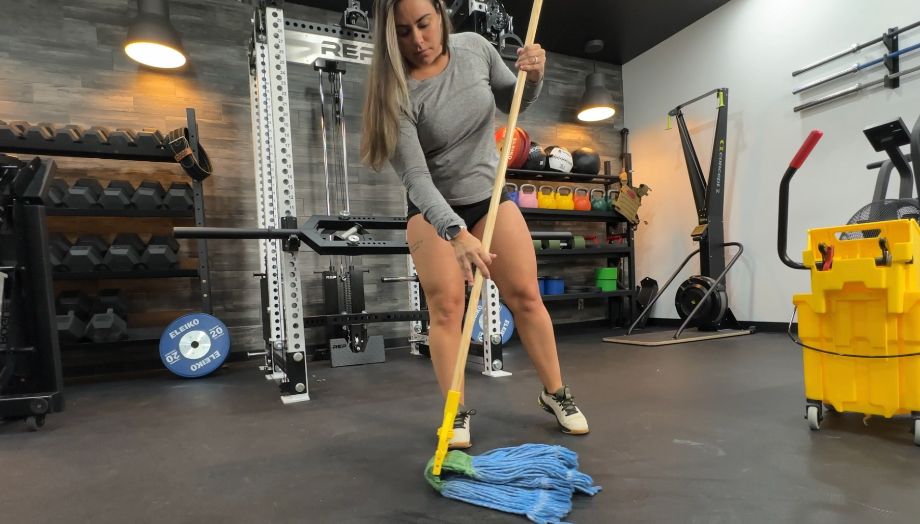
Why I Generally Don’t Recommend Foam Home Gym Flooring
A lot of people immediately think of foam home gym flooring when weighing their options. It may be a cheaper alternative to most commercial grade flooring choices, however, it is not ideal.
Less Durability
When choosing gym flooring, you want something that will last for years to come, protect the floor or foundation of your home (garage, basement, bedroom, etc.), and be easy to clean/disinfect.
Imagine deadlifting or dropping a weight onto the foam. That foam will decompress over time, which may result in damaging the floor underneath. The cracks in between can also cause smaller items to become lost. Unfortunately, I learned this too late and now have some small cracks in my basement floor from heavy deadlifts.
Not Water-Resistant
Next, even if you’re the only person lifting in your gym, the foam tiles are porous. They absorb any type of liquid, whether it’s an all-purpose cleaner, sweat, a sports drink, or that whey protein shake you made minutes before it fell to the ground. As you move quickly to mop up the excess liquid, it will be too late.
Not Non-Slip
Foam tiles are even more of a potential injury nightmare when they become wet because they become super slick. When I reinstalled my tiles, I thought most of them were dry and began to install and walk on them, which was a huge mistake. I nearly wiped out some of the tiles still holding on to water, even after hours of drying time outside.
Foam flooring may be cost-effective, but the potential risks outweigh the price. You don’t want to be liable if someone slips or falls due to faulty flooring. Your best bet is to spend the money on our top pick and install the correct flooring the first time.
Best Home Gym Flooring FAQs
How thick should home gym flooring be?
Home gym floors should always be sturdy enough to withstand strenuous exercises and the use of weights or equipment. Increased cushioning will also be gentler on joints and will protect an existing floor below. Shock-absorbing foam is ideal for home gyms with weight machines and cardio equipment. To offer floor protection and traction, this puzzle-like material should be 0.32 inches thick or thicker.
The most common thickness for home gym flooring is 8 millimeters. CrossFit exercises and Olympic lifting, on the other hand, require at least 3/8 inches. If you intend to drop very heavy dumbbells and/or kettlebells on a regular basis, we recommend going with the 1/2 or 3/4 inches just to be cautious.
What is the best rubber flooring for a home gym?
Depending on how much wear and tear you expect from your home gym use (dropping weights and dumbbells), the thickness you may want or need might vary. Most rubber flooring is about 8 millimeters thick, but there are thicker options for lifters who will be dropping weights routinely.
Our favorite pick for rubber flooring is the 8-millimeter rubber rolls from Flooring Inc. However, for a thicker flooring, you can opt for PLAE Forge or for budget horse stall mats from Tractor Supply.
Is foam or rubber better for gym flooring?
Foam can often be an inexpensive alternative to rubber flooring for a home gym. It’s great for using underneath home gym storage, or as padding for bodyweight exercises. However, if you’re looking to lift and drop weights, dumbbells, and kettlebells, you’ll want something a bit more durable, like a rubber floor.
What type of flooring is best for a home gym?
The ideal type of flooring for your home gym will protect any subflooring underneath it and also provide you with the durability and protection to go through your typical workout routine. Rubber tiles and rolls are some of the most common types of gym flooring due to its durability and protection for lifting and dropping weights, but foam, turf, vinyl, and other types of flooring can be used for different purposes and modes of training.
References
- Jastifer, J. R., McNitt, A. S., Mack, C. D., Kent, R. W., McCullough, K. A., Coughlin, M. J., & Anderson, R. B. (2019). Synthetic Turf: History, Design, Maintenance, and Athlete Safety. Sports health, 11(1), 84–90. https://doi.org/10.1177/1941738118793378
- Malisoux, L., Gette, P., Urhausen, A., Bomfim, J., & Theisen, D. (2017). Influence of sports flooring and shoes on impact forces and performance during jump tasks. PloS one, 12(10), e0186297. https://doi.org/10.1371/journal.pone.0186297
- Streepey, J., Gross, M., Martin, B., Sudarsan, S., & Schiller, C. (2000). Floor Composition Affects Performance and Muscle Fatigue Following a Basketball Task. Journal of Applied Biomechanics, 16, 157-168. 10.1123/jab.16.2.157.



